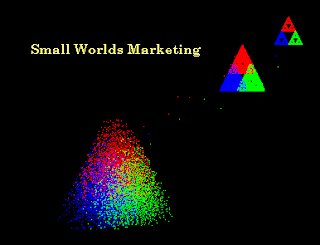Although VW had a highly successful marketing campaign for their New Beetle, there is another VW brand that did not fair so well, the Phaeton. Still sold in the rest of the world, it was withdrawn from the U.S. in 2007 after three years. Although VW seemed to hit, mechanically at least, all the IMC tactics and tools that made the New Beetle a success, there was not much buzz for the Phaeton. 
This should not have surprised VW. The iconic Beetle still had traction a generation later, a part of our retro-chic culture today. The New Beetle IMC job was to reacquaint old friends for $16,000, the Phaeton IMC job was orders of magnitude harder, to turn strangers into friends, and charge them $74,000.
The VW corporate theme is advanced and innovative transportation solutions. They used the new media in the Phaeton rollout to the U.S., including short film. Here is their introduction to the Phaeton.
VW worked with new media such as RoadandTrack.com during the introduction of the car through traditional press releases given to interested magazines. What's new Volkswagen.
One wonders why, since VW already owns Audi, Bugatti and Bentley, they would want to also make the VW brand name synonymous with high end luxury cars. Nevertheless, their chief engineer thought it a good idea, and here they are sponsoring golf tournaments with the new VW Phaeton brand name, trying to make it a high-end marque. Miami sponsorship.
They did a good job with these. They had Indy 500 champ drivers taking the golfers for test drives. This would seem to be opportunities for local media to cover the story but not many takers. Early on there was incredulity about the price tag for the "people's car."
They do have video news releases (VNRs). There are also short film documentaries about the Phaeton on youTube that make it look exciting. Here is an example: Utube.
Steve Parker at Automotive news pretty well sums up the attitude from the press about the Phaeton: "It's a fantastic, fun car --- But VW has a division named Audi to sell cars in this price class" (seeBrand issue - AUDI not VW division).
The car is a wonderful machine. It is the only car to win the International Forum for Design. It has input from the Bugatti, Bently and Audi divisions of VW. It is the only car to win the gold award at the Iternational Forum for Design (see DesignWinner).
I think this was a failure because they should not have spent so much on a good car to put it in an odd market niche. How consistent is the Phaeton with target segment for VW?






